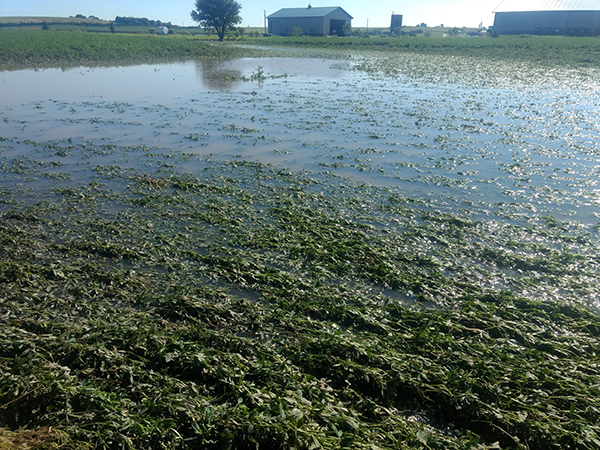
Flood damage to growing crops depends on several factors: 1) crop growth stage and development, 2) frequency and duration of flooding, 3) air-soil temperature, and 4) field drainage capabilities. If temperatures are warm and soils are saturated with water, plant respiration rates will increase. This causes oxygen levels to decline rapidly in the soil and more plant stress to occur. This article looks at these factors, including crop survival after being under water for various periods and at various temperatures. It also addresses prevented planting concerns, cover crop options for these acres, and revisits NRCS recommendations for planting corn as a cover crop into prevented planting acres.
More details at: https://cropwatch.unl.edu/2019/crop-impacts-mid-season-flooding